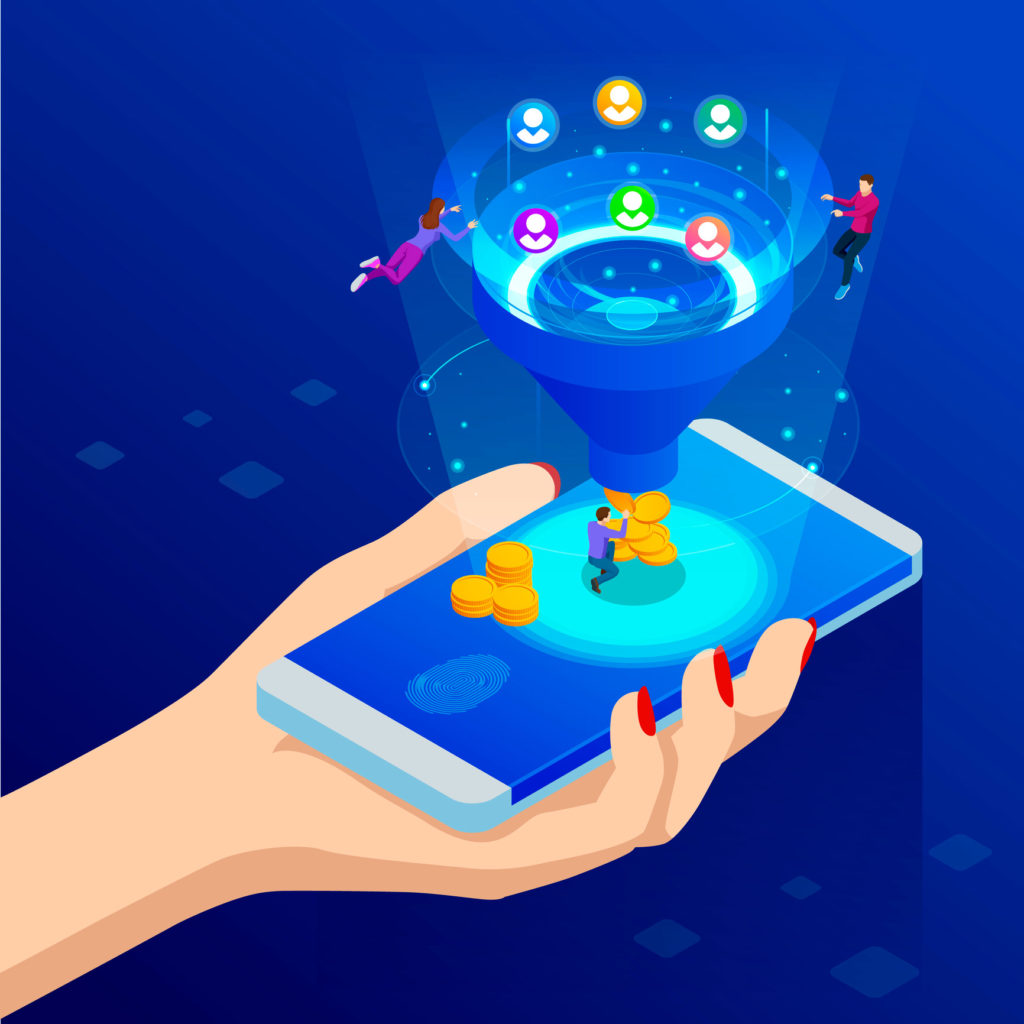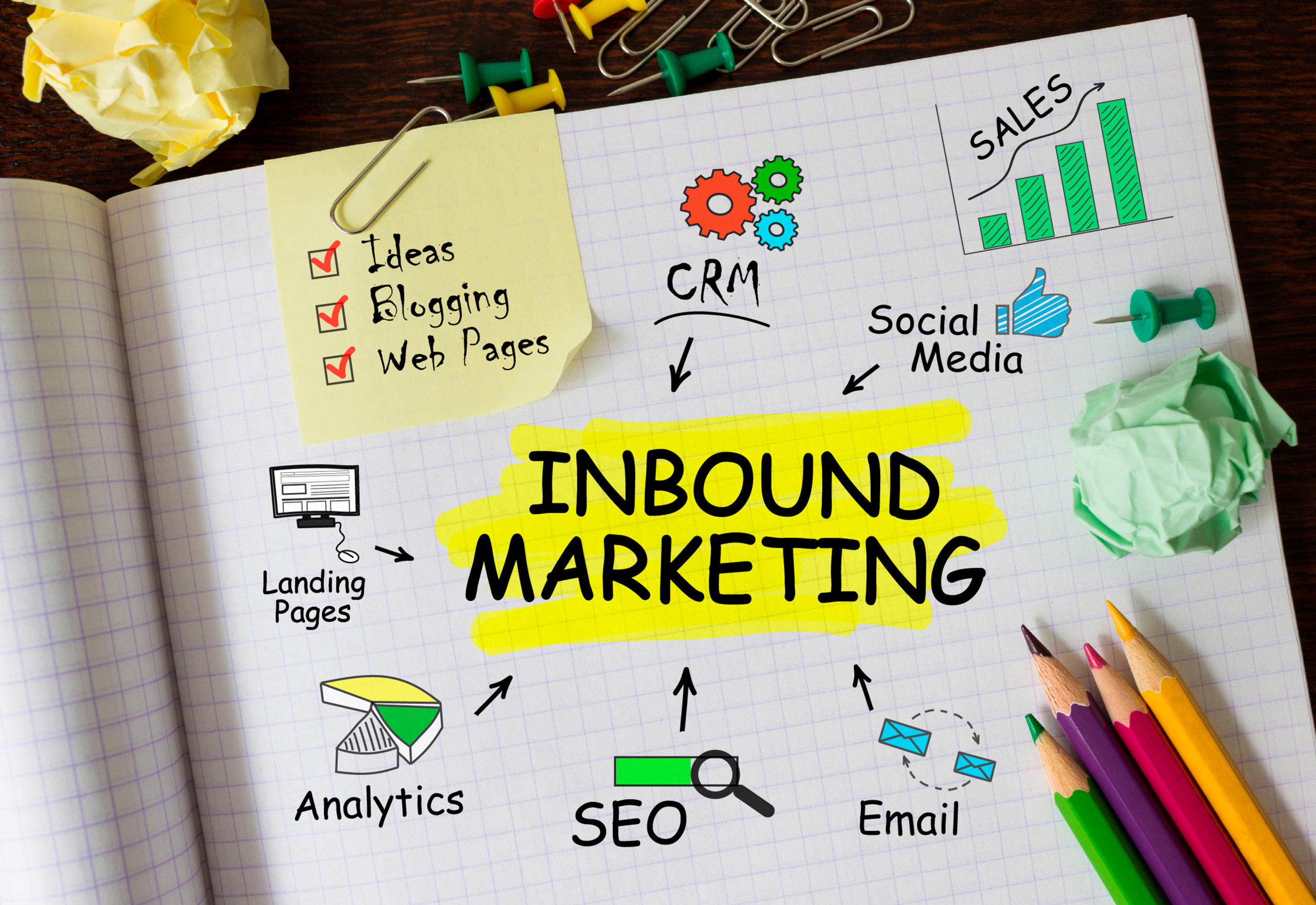Discover how Inbound Marketing works and how to use it professionally to generate authority, share knowledge, and capture leads.
C
ith time, the way we do some things changes, gaining new insights and more current approaches. This natural updating of things applies to many different spheres. It has happened and is happening right now. We change the way we dress, talk, drive our cars, and ultimately how we approach our future customers. Inbound Marketing is a great example of change in this approach.
From a direct and practically imposing communication, many organizations started to first show their value and then offer their products and solutions. This strategy brings benefits both for the consumer – who gets more information to assess whether the product meets his needs and the company’s authority in the market – and for the company, which has a way to qualify the attraction of its customers.
This text aims to explain, in a clear and didactic way, how Inbound Marketing has gained strength and space in the strategy of small to large companies and communication agencies, such as Vision Comunicação. This growth has some reasons, ranging from a more intelligent and structured approach to the very possibility of measuring your return on investment.
What is Inbound Marketing?
In a quick analogy, the proposal of Inbound Marketing is not just to give the fish and much less to teach how to fish. Inbound is to know how to win the fish and guarantee that the shoal will come to you of its own free will. But calm down, what sometimes seems like a miracle from the outside is pure strategy from the inside.
Many companies are used to the traditional way of reaching customers, called Outbound Marketing. That is, the company actively goes after the customer and does not first generate a spontaneous interest in the person in your brand.
Unlike Outbound Marketing, Inbound Marketing uses Content Marketing and SEO to make the purchase journey through the path that least “crosses” the daily life of the target audience. The idea of this strategy is, through platforms such as blog, newsletter, e-mail marketing, social media and Google, to make the audience itself follow a trail of targeted content and, through its trust in relation to the source of information, which is the same company that wants to have him as a customer, make the purchase.
And how does this happen? We will explain it step by step below!
What is Inbound – Stage 1
The practice of Inbound Marketing is known for acting as a sales funnel. It all starts in a process of gaining the trust of the target audience, little by little proving by A + B that your company has everything to make the lives of these potential customers easier. Therefore, it contributes to solving their doubts and needs through free and well-defined information. It can be disseminated via blog, newsletter, e-mail marketing, social media, and other channels. But its reach and results are enhanced when coupled with an SEO strategy, to improve the ranking of the materials in search engines and expand its reach.

This first phase is built by information and content seemingly unconcerned with the conversion itself. They are texts that permeate the main subject on top. This prevents the impacted people from feeling seen as customers, and not as just simple readers, which can definitely drive them away from your brand. After all, the content could be seen as mere advertising.
To give a practical example and make the understanding of this first step more tangible, imagine a travel agency starting a professional Inbound Marketing project. For this first moment, the content could permeate subjects such as “10 tips to pack quickly”, or even “how long does a passport take to expire”. This is content that begins to address issues that, until then, represent doubts in the minds of the target audience – even if they are not yet clear if they want to take a trip soon.
What is Inbound Marketing – Stage 2
After attracting attention and gaining some credibility with the people you want to reach, being seen as an expert in your market, it is time to move on with the strategy by tapering down the content a bit more. In other words, let’s go to part two of the Inbound Marketing plan. In this part, the contents will already be a little more inclined to the beginning of a conversion, bringing the future customer closer to a message that actually offers your product or service. It is the moment when he has already had his initial doubts solved and is looking for a way to solve his main need.
Continuing the same example of the travel agency doing Inbound Marketing, now in stage two, it would be time to launch materials such as “How long should I anticipate the purchase of my plane ticket?” or “Top 10 countries to travel to for a honeymoon”. Note that these are still contents that do not directly relate the content to the company, with a sales tone. However, the solutions presented here may already be limited to travel plans offered by the agency.
What is Inbound Marketing? – 3rd phase
Here we are almost at the end of the purchase journey. After attracting and conquering, we finally reach the moment of the long-awaited sale. Be careful: what this part is important, it is also delicate. It is necessary to act very precisely in order not to lose your lead to a competitor with a strategy similar to yours.
At this stage, the customer is already sure about the ideal solution for his or her needs, and is deciding among the options on the market. It is now that your company will demonstrate why it stands out among the competition and the benefits of its products and solutions. This can be done through success stories, posts explaining the product’s features and how to use it step by step, demonstration videos, market comparisons, among others.
In the case of the travel agency we used as an example, the bottom of the funnel content could be videos with customer testimonials, comparisons with competitors’ packages, posts describing the day to day of a trip when hiring an agency’s itinerary, and more. You cannot forget the call to actions to direct the person to the conversion page, made through hyperlinks, banners or pop-ups.
Does this mean that only at the end you will be able to generate conversions? Not necessarily. You can also insert calls to action in a subtle way in the other stages of the funnel. Another way to speed up the process is through downloadable materials such as e-books, guides, infographics, among others. By filling in their details to access the material, the person becomes a lead. Find out below how this benefits the conversion process.

What does it mean to generate leads?
Before knowing how to generate a lead, it is important to be fully aware of what it means to be a lead. It’s simple: a lead is a person who, in some way, has shown interest in the product or service offered by your company. He becomes a lead when he provides his e-mail address or, somehow, leaves his data or some information that identifies him, so that the company can contact him later.
But not necessarily a lead can become a customer. Sometimes, he just wanted to download a specific material or watch a webinar. This is where the concept of a qualified lead comes in. The qualified lead is the one who makes clear his interest in the company, either by sending a message directly on the contact form or by having several interactions with your materials.
Sending e-mails through an automated track is a way to nurture your leads with quality content, to try to lead them to a conversion. To define if a lead is qualified or not, the Marketing team should work together with the Sales team. We will explain this better in the next topic.
Saleketing: the union that generates results
As the name implies, this is a term that refers to an intelligent junction between the Sales and Marketing sectors. With the frequent use and strengthening of Inbound Marketing, the marketing team’s results become more and more measurable. As the values of the sales team are also easily raised, the term Saleketing arose to strategically place the two teams to work together in order to improve the ROI of the actions.
The union between the two areas is essential for the Inbound strategy to have a complete cycle. After all, it is not enough to generate leads, it is necessary to lead them to conversion. Therefore, the teams need to establish parameters about what they will consider qualified leads (which vary from company to company). The participation of the Sales team is also fundamental to provide valuable insights for the content, since they have great proximity and knowledge about the customers and their needs.
This whole interaction process starts with both areas talking to make the process really unique and effective. This alignment is called SLA (acronym for Service Level Agreement). After the teams exchange information, directions, and their difficulties with each other, a periodicity for the analysis of results must be defined. How was the lead generation in the period? And of qualified leads? What is the conversion rate? What is the average time to convert a lead?
There are many aspects to be evaluated, and this communication must be frequent. This way, it is possible to have a clear vision of the strategy results and improve it whenever necessary.



![After a year of unexpected events, what can we expect from SEO for 2021? Which trends will be the most important? Here are the 4 SEO trends that we think are most relevant to share with our partners: 1. SEO strategy focused on the user and their search intent The cornerstone of a good […]](https://agencia.vision/wp-content/uploads/2021/01/iStock-1272552846-1-255x200.jpg)
![2021 started with new features announced by two of the most used social networks in the world. Seeking a more streamlined design, Facebook has announced some changes to its pages for 2021. Facebook Pages allow companies, artists, and public figures to create a space to update their followers and interact with them. The new changes […]](https://agencia.vision/wp-content/uploads/2021/01/iStock-917142888-255x200.jpg)
![But what is the new Clubhouse app? Like every new app, Clubhouse will tread the 3 stages: wave formation, the crest of the wave and the froth :). We are at the exact moment of the wave formation and it repeats an old formula of exclusivity, the scarcity trigger, which is the limited number of […]](https://agencia.vision/wp-content/uploads/2021/02/como-funciona-o-clubhouse-255x200.jpg)
social vision